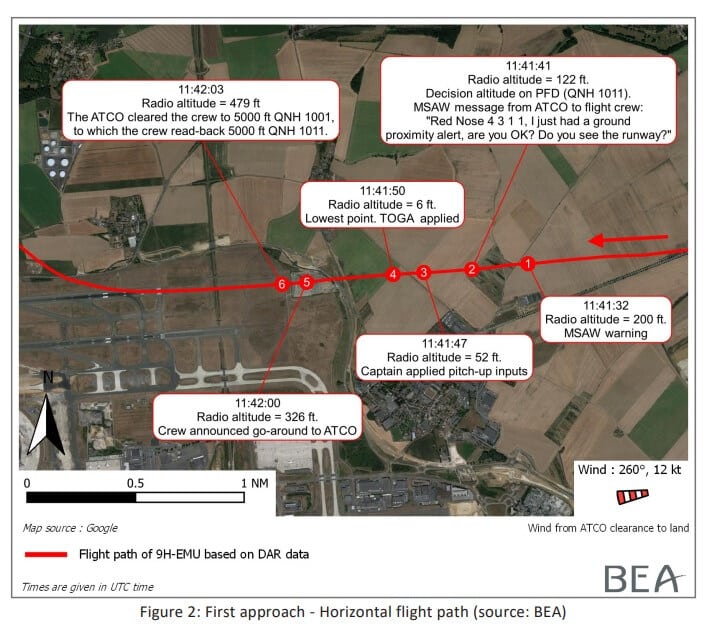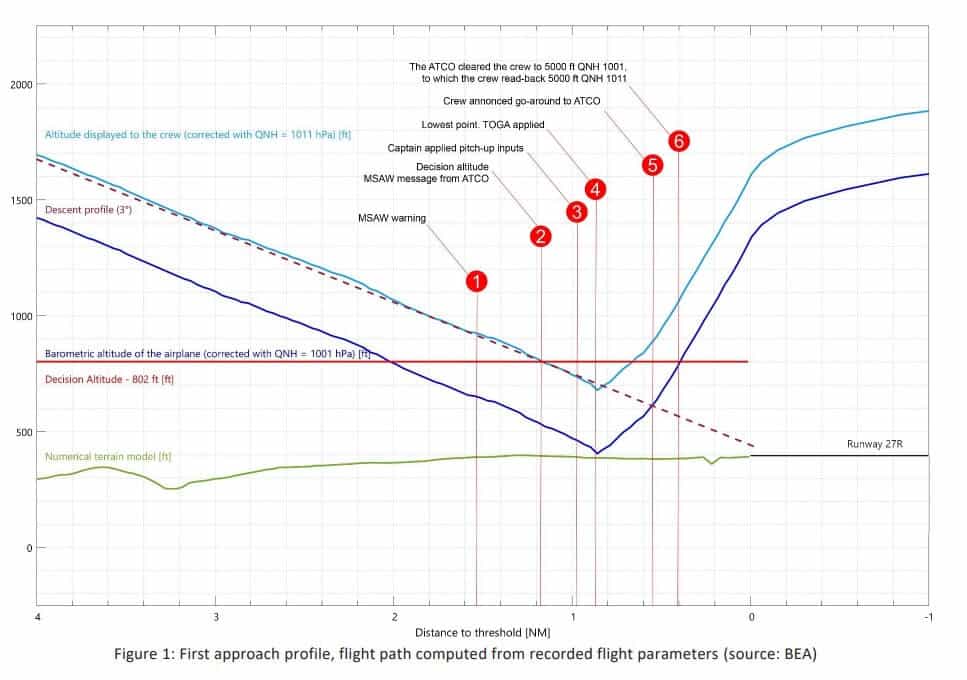Aviation
Airbus A320 comes within 6 ft of crashing while on approach to Paris
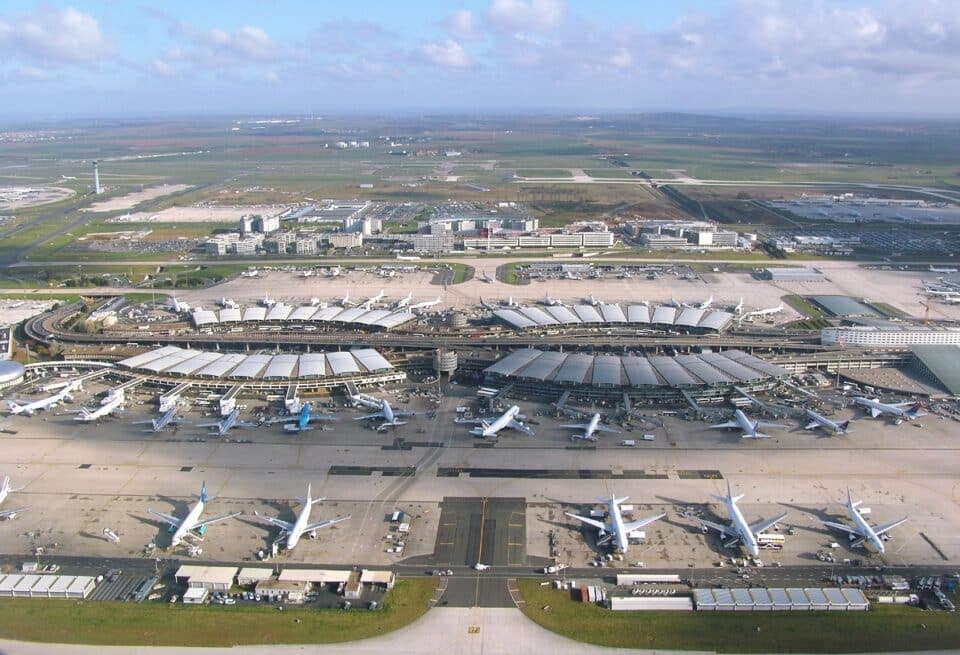
According to a report by French authorities, an aeroplane carrying 172 passengers came within 6 feet (1.8 metres) of crashing while making its approach to Paris Charles de Gaulle (CDG). On May 23, 2022, at at 11:40 UTC, the Airbus A320, with the registration 9H-EMU and operated by wet lease expert Air hub, was coming in to land at CDG on a trip from Stockholm Arlanda when the near-collision occurred because of an improper altimeter setting.
The approach was flown 280 feet lower than it should have been because the controller repeatedly gave the crew the wrong QNH setting, 1011 instead of 1001, and the crew failed to notice the error. The Minimum Safe Altitude Warning (MSAW) was triggered on both approaches during this serious incident, and the controllers failed to use the prescribed MSAW phraseology. The report noted that the crew was not provided the QNH or any instructions to verify their altitude.
For Air hub, the BEA recommends that crews are made aware of the importance of the correct QNH setting for such RNP approaches and implement a procedure to cross-check QNH information with another source.
First approach – Horizontal flight path
The flight, which was being flown on behalf of Norwegian Air Shuttle, was making an LNAV/VNAV minimum RNP approach to runway 27 at CDG. Because the aircraft will get its altitude information from the barometric altitude systems, this style of approach depends on pilots using the proper QNH setting.
According to the preliminary report from the BEA, air traffic controllers received a ground Minimum Safe Altitude Warning at 11:41:32, when the aircraft was at an indicated altitude of 617 ft on the correct QNH of 1001, or 200 feet above the ground according to the radio altimeter, at 1.53 nautical miles from the runway threshold. With a QNH setting of 1011, the crew would have seen an indicated altitude of 891 ft. CDG is 392 ft above sea level.
At 1.2 nautical miles from the runway, nine seconds later, the crew passed the decision altitude of 802 feet in accordance with the inaccurate 1011 QNH setting. The crew decided to turn around since they could not see the runway. However, the aircraft was 122 feet above the ground when the QNH was adjusted to the proper altitude of 1001, which was 537 feet.
The autopilot was removed and the captain pitched the aircraft up at 11:41:47, 15 seconds after ATC received the alert and during the controller’s call to the aircraft. The aircraft’s lowest point above the earth, measured by the radio altimeter at just 6 ft, was reached three seconds later and when it was still 0.8 miles from the runway.
Second approach
On the second approach for landing, the faulty QNH setting was not corrected, and the aircraft was again 280 ft lower than it should have been. Another MSAW was generated when the aircraft was 3.1 nm from the runway at an indicated altitude of 1,403 ft on QNH 1011 (but 1,131 ft QNH 1001, 842 ft per the radio altimeter).
When called by the controller, the crew said they did not understand why the message had been received but that they were visual with the runway. However, runway PAPI lights indicated to the crew that they were lower than they should be, so they corrected the approach and landed safely.
Courtesy : BEA

Aviation
Air India’s B747 Makes Its Final Journey, Waving Farewell to Fans

In a poignant moment marking the end of an era in aviation history, Air India’s iconic Boeing 747 aircraft, affectionately known as the ‘Queen of the Skies,’ embarked on its ultimate journey from Mumbai’s international airport.
The departure, bound for Plainfield, USA, where it will undergo dismantling and part-stripping under the ownership of American AerSale, signals the closure of a storied chapter for the airline.
Once revered for transporting dignitaries ranging from prime ministers to presidents, the Boeing 747 has etched itself into aviation lore. Yet, as airlines worldwide pivot towards more contemporary and cost-effective aircraft, Air India’s decision to bid farewell to its remaining Boeing 747s reflects the pragmatic realities of today’s aviation landscape.
The sale of these majestic planes to AerSale represents a strategic move by Tata Group, Air India’s new custodian, towards optimizing operational efficiency and embracing modern industry standards. Out of the four aircraft sold, two will be repurposed into freighters, while the remaining pair will be meticulously disassembled to salvage valuable components.
The final flight from Mumbai witnessed a touching tribute as pilots performed a traditional ‘Wing Wave,’ symbolizing the conclusion of the Boeing 747‘s distinguished service with Air India. This poignant gesture encapsulates the deep sentiment attached to the aircraft’s departure and its significant contribution to the airline’s legacy.
As the Boeing 747 embarks on its journey to Plainfield, USA, nostalgia permeates the air, evoking memories of its maiden flight on March 22, 1971. Over five decades, Air India operated a total of 25 Boeing 747s, each leaving an indelible mark on the annals of aviation history.
Middle East
British Airways Resumes Daily Flights to Abu Dhabi, After 4-Year hiatus
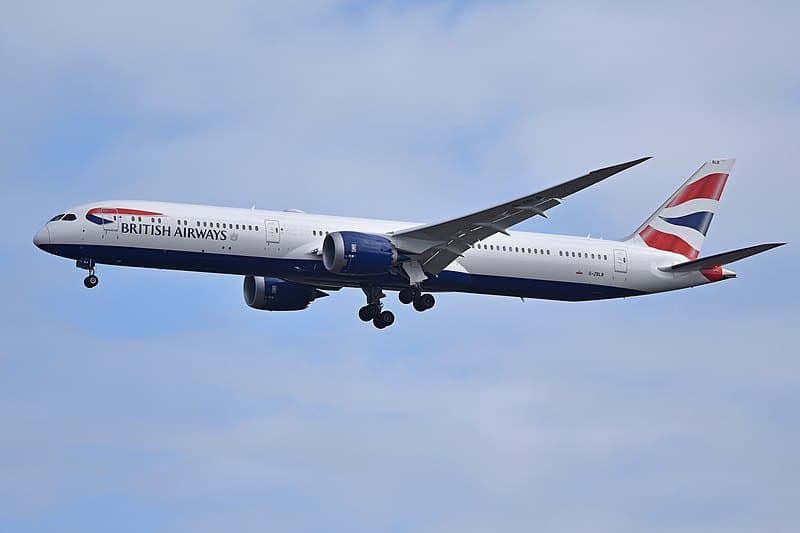
British Airways made its way back to Abu Dhabi, landing at Zayed International Airport. Following a four-year break in service, both crew and passengers were greeted with enthusiasm.
In the summer of 2024, British Airways plans to launch a daily route, utilising a Boeing 787-9, from London Heathrow to Abu Dhabi. The new route enhances ties between the UAE and the UK and expands vast worldwide network, catering to passengers who may be visiting friends and family or travelling for business.
Arriving in Abu Dhabi at 08.30+1, flight BA073 to Abu Dhabi leaves London Heathrow at 22.25. Departing at 10.10 and landing at London Heathrow at 15.20 is the inbound flight (BA072).
The chief executive officer and managing director of Abu Dhabi Airports, Elena Sorlini, stated: “We are delighted to welcome British Airways to Zayed International Airport. Their daily schedule is expected to improve connectivity and stimulate travel and business.” Visitors may experience the dynamic capital of the United Arab Emirates like never before at our brand-new, award-winning, state-of-the-art terminal, where they will be welcomed with the best kind of Emirati hospitality.”
Flight schedule:
| London Heathrow (LHR) to Zayed International (AUH)All times are local | ||||||
| Season | Flight number | Departing LHR | Arriving AUH | Flight number | Departing AUH | Arriving LHR |
| Summer ‘24 | BA73 | 22:25 | 08:30+1 | BA72 | 10:10 | 15:20 |
| Winter ‘24 | BA73 | 22:25 | 09:30+1 | BA72 | 11:10 | 15:20 |
Aviation
FAA investigation: Passenger seated in Captain’s seat inside cockpit at cruising altitude
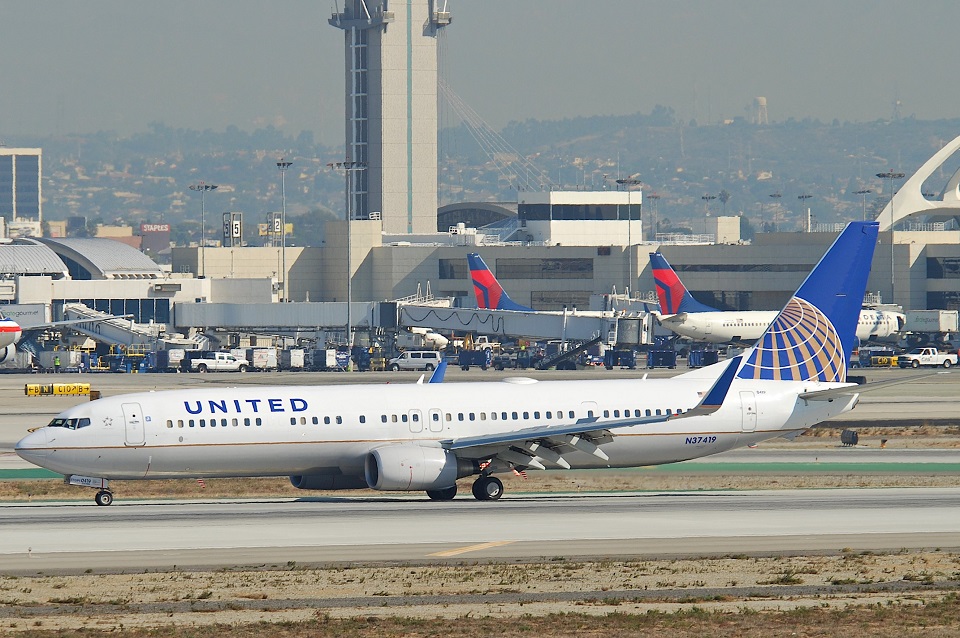
A viral video capturing a startling moment aboard a United Airlines charter flight from Denver to Toronto has triggered a federal investigation.
The footage, initially shared on social media by Hensley Meulens, the hitting coach for the Colorado Rockies baseball team, depicts a member of the coaching staff seated in one of the pilot seats while the aircraft was in mid-flight.
In his caption, Meulens expressed gratitude to the captain and first officer for allowing him this unusual experience. The video, filmed by another passenger, reveals the cockpit door open, and at one point, a third passenger briefly enters the flight deck. Alarmingly, during this time, the captain was absent from the cockpit.
Despite the flight being a private charter operated by United Airlines, company and Federal Aviation Administration (FAA) regulations strictly prohibit passengers from entering the cockpit during flight or leaving the flight deck unsecured.
United Airlines swiftly responded, expressing deep concern over the incident. A spokesperson emphasized that the video depicted an unauthorized person in the flight deck at cruising altitude with the autopilot engaged, constituting a clear violation of safety and operational policies.
The FAA confirmed that it is actively investigating the incident, highlighting that unauthorized access to the flight deck during flight is a violation of federal regulations. The agency assured that it is taking the matter seriously and will conduct a thorough examination to ensure compliance with aviation safety standards.

